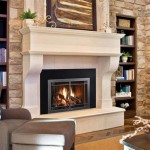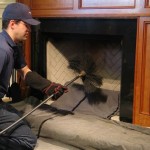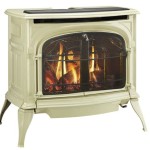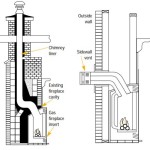```html
Stone Veneer Fireplace DIY: A Comprehensive Guide
Installing stone veneer on a fireplace is a project that can significantly enhance the aesthetic appeal of a living space. This undertaking, while manageable for experienced DIY enthusiasts, requires careful planning, proper execution, and adherence to safety guidelines. This article provides a detailed guide to installing stone veneer on a fireplace, covering essential steps from preparation to finishing touches.
Understanding Stone Veneer and Its Benefits
Stone veneer is a lightweight alternative to natural stone, offering the visual appeal of real stone without the substantial weight and cost. It is typically manufactured from a concrete mixture or natural stone fragments bonded together. Stone veneer is available in a wide range of styles, colors, and textures, allowing homeowners to customize the look of their fireplace to match their desired aesthetic. Compared to traditional masonry, stone veneer simplifies installation and reduces the structural requirements of the fireplace surround.
The advantages of using stone veneer include its relatively easy installation process, lower material costs compared to natural stone, and its lighter weight, which reduces the need for extensive structural reinforcement. Furthermore, stone veneer is durable and resistant to weathering, making it a long-lasting solution for fireplace facelifts. It also offers improved insulation compared to some other finishing materials.
Before beginning any DIY project, it's crucial to understand the applicable building codes and regulations in your area. Fireplace installations, even cosmetic upgrades like stone veneer application, may be subject to specific codes regarding clearances from combustible materials and proper venting. Contacting your local building authority can prevent costly mistakes and ensure compliance.
Preparation: Essential Steps for a Successful Installation
Proper preparation is paramount to a successful stone veneer installation. This involves assessing the existing fireplace structure, preparing the surface for the veneer, and gathering the necessary tools and materials. Skipping or rushing this stage can lead to adhesion problems, structural instability, and an unsatisfactory final appearance.
The first step is to inspect the existing fireplace surround. If it is made of brick, concrete, or other non-combustible materials, you may be able to apply the stone veneer directly. However, if the existing surface is painted, glossy, or covered with wallpaper, it must be properly prepared. Painted surfaces should be roughened with sandpaper or a wire brush to provide a better bonding surface. Glossy surfaces should be thoroughly cleaned and etched with a concrete etcher to improve adhesion.
Combustible materials, such as wood paneling or drywall, must be removed from the area that will be covered with stone veneer. These materials pose a fire hazard and cannot be directly covered with stone veneer near a fireplace opening. Replace the removed combustible materials with cement backer board, which is fire-resistant and provides a suitable surface for adhering the stone veneer. Ensure the cement backer board is securely fastened to the underlying framing with appropriate screws.
Next, apply a scratch coat of mortar to the cement backer board. This provides a textured surface that will further enhance the adhesion of the stone veneer. Mix the mortar according to the manufacturer's instructions and apply a thin, even layer using a notched trowel. Allow the scratch coat to dry completely, typically for 24-48 hours, before proceeding with the stone veneer installation.
While the scratch coat is drying, gather the necessary tools and materials. This includes the stone veneer itself, mortar (specifically designed for stone veneer), a mixing container, a mortar mixer or drill with a mixing attachment, a notched trowel, a level, a rubber mallet, a wet saw or masonry saw (for cutting the stone veneer), safety glasses, gloves, and a dust mask. Having all the necessary tools and materials on hand will streamline the installation process and minimize interruptions.
Installation: Applying the Stone Veneer
Once the preparation is complete, the actual installation of the stone veneer can begin. This involves carefully selecting and arranging the stones, applying mortar to the back of each stone, and pressing them firmly onto the prepared surface. Attention to detail and adherence to proper techniques are crucial for achieving a professional-looking result.
Before applying any mortar, dry-fit the stones in the desired pattern. This allows you to visualize the final appearance and make any necessary adjustments to the arrangement. Aim for a natural, random look by mixing different sizes, shapes, and colors of stones. Consider the overall aesthetic of the room and choose a pattern that complements the existing décor. Numbering the stones lightly on the back with a pencil during the dry-fit process can help maintain your desired arrangement during the actual installation.
Mix the mortar according to the manufacturer's instructions. It should have a thick, pasty consistency that holds its shape when applied to the stone. Avoid using excessively wet mortar, as this can weaken the bond and cause the stones to slip. A mortar mixer or a drill with a mixing attachment can help ensure a consistent and well-mixed mortar.
Using a notched trowel, apply a generous amount of mortar to the back of each stone. Ensure that the entire surface of the stone is covered, with a slightly thicker layer towards the edges. This will create a strong bond with the scratch coat and prevent moisture from penetrating behind the veneer. Apply the mortar in a consistent direction to create ribs that will interlock with the scratch coat.
Press the stone firmly onto the prepared surface, wiggling it slightly to ensure good contact with the mortar. Use a level to ensure that the stones are aligned correctly. Tap the stone gently with a rubber mallet to secure it in place. Remove any excess mortar that squeezes out from the joints using a pointing tool or a small trowel. Be careful not to smear the mortar on the face of the stone.
Continue applying stones, working from the bottom up. Maintain consistent joint spacing between the stones. This can be achieved by using spacers or by carefully eye-balling the spacing. The desired joint spacing will depend on the style of stone veneer you are using. Some styles are designed to be dry-stacked, with minimal or no visible joints, while others require wider joints.
When cutting stones to fit around corners or edges, use a wet saw or masonry saw. These tools are designed to cut through stone veneer cleanly and accurately. Always wear safety glasses and a dust mask when cutting stone to protect your eyes and lungs from flying debris.
Finishing: Completing the Project
Once all the stones have been installed, the final step is to finish the joints and clean the surface. This will enhance the appearance of the fireplace and ensure its long-term durability.
Allow the mortar to set for at least 24 hours before grouting the joints. Use a grout bag or a pointing tool to fill the joints with mortar. The type of mortar used for grouting can be the same as the mortar used for adhering the stones, or you can use a specialized grout designed for stone veneer. Choose a grout color that complements the color of the stones.
Once the grout has partially dried, use a damp sponge to clean any excess mortar from the surface of the stones. Be careful not to remove too much grout from the joints. Rinse the sponge frequently to avoid smearing the mortar on the stones.
Allow the grout to fully cure according to the manufacturer's instructions. This typically takes several days. Once the grout is cured, you can apply a sealant to the stone veneer to protect it from moisture and stains. Choose a sealant that is specifically designed for stone veneer and follow the manufacturer's instructions carefully.
Finally, inspect the finished fireplace for any imperfections and make any necessary repairs. Touch up any areas where the grout is missing or damaged. Clean the surrounding area and admire your newly renovated fireplace.
```
How To Install A Stone Veneer Fireplace Shoe Makes New

Thin Stone Veneers Make A Fireplace Update Easy Swenson Granite 100 Natural Stones

Diy Homeowners Go Vertical With Stone Veneer Stoneyard

Diy Homeowners Go Vertical With Stone Veneer Stoneyard

A Step By Diy Stone Veneer Installation On Fireplace In Only 4 Days This Customer To Faux Fireplaces Designs

Diy Overgrouted Stone Fireplace Shoe Makes New

Diy Stacked Stone Fireplaces On A Budget Msi Blog

Custom Stone Fireplace Archives Native

A Diy Stone Veneer Installation Step By North Star Stacked Fireplaces Fireplace Wall

Nate S Diy Stone Veneer Corner Fireplace Genstone
Related Posts








